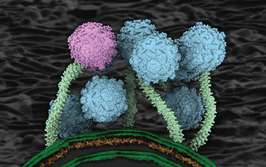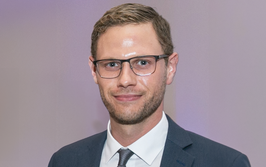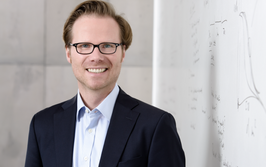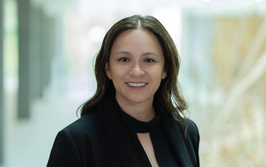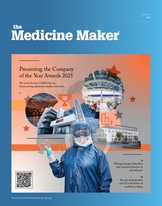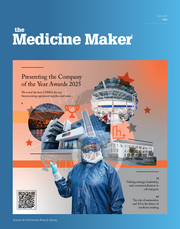
Stirring the Talent Pool
Cell and gene therapies have earned a high profile in recent years, but the field’s rate of growth has led to a gold rush on talent. Widespread training initiatives and a supply of experienced professionals are vital to keep the industry moving forward.
Bruce Levine | | Longer Read
When people ask, “Do you teach?” I tell them that most of my teaching is actually outside of the University – and not only by virtue of our program here, but also through my position as President Elect of ISCT. There are many reciprocal invitations from collaborative societies around the world. In August, I was in Korea for a week, speaking at an innovation and biotechnology conference, and meeting biotech companies there. In March, I was in Taiwan, where I met with the Vice President at a conference. To be global, to engage, and to really move the needle forward as this technology progresses is an essential part of who we are as a society.
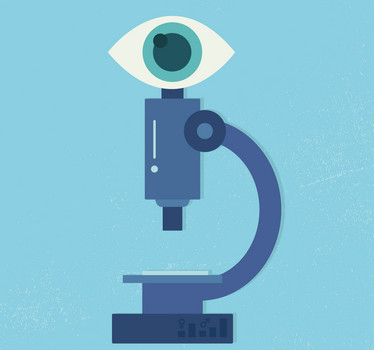
An advancing field
Looking out of my window, I can see three floors of cancer immunotherapy researchers at the University of Pennsylvania, probably the largest collection of such researchers at an academic institution in the world. But consider where we came from: a very small group of researchers going to meetings scheduled on the last day of a session, in a room nobody could find, with only the speakers and two or three others attending. Now the sessions are packed!
When you start a research project or design a clinical trial, you have in your mind what would be an amazing outcome. We achieved our amazing outcome in 2010 and in 2012 with our early CAR T-cell patients. I have a graph of the results on my filing cabinet like a parent would put up their kid’s artwork – I just could not believe it. We’ve had quite a ride.
I am excited by so many things that are going on in the cell and gene therapy space at the moment. As an immunologist by training, it is not only seeing the science and the clinical trials advance that I find incredibly exciting. It is also the fact that we are talking about things like reimbursement, ethics, and patient education. When we began to investigate these therapies, I did not appreciate what would happen if we were successful – that we would be thinking about all of these issues, and speaking with the media and the public. That transition from early research and development to having a broad impact on a new pillar of medicine is exhilarating.
Industry-wide shortages
Despite our advances, the field still suffers from a lack of capacity in terms of facilities – space in laboratories and academic centers; space to manufacturer vectors for gene delivery or manufacturing of cells; and our tools and technologies. But progress is being made.
The area of highest priority right now is the severe shortage of people with experience in the field – technical, regulatory, and even at the higher levels. When we bring someone on who may not yet have much experience, it takes longer to train them. It takes longer for them to make an impact, and it takes time from a mentor.
Less than 20 years ago, we were working in a niche field, so we did not expect to find people with experience, but we could take our time. Now, the rate of acceleration in the industry has put a gold rush on talent. Talent is scarce, which means you may train someone and then lose them – there is extensive recruiting and cross-recruiting. Although academic centers can offer the a-to-z of discovery, development, translation and clinical trials, they lose people to higher-paying industry, which has a cascade effect.
Higher-level departures also feed into the issue we have with a shortage of talent. We need to recognize and identify key roles, and plan who might fill that role, if the need arises. This is good practice in both industry and academia. But as the field has been moving so fast, firms and centers have not paid as much attention as they should.
So how else do we adapt? We have looked into adjusting pay and compensation scales to compete in this area, with the argument that these positions are not research positions, they are clinical manufacturing positions. And we have been adjusting our onboarding and training programs, including the Early Stage Processionals (ESP) Committee Mentoring Program, the Cell Therapy Training Courses, and several other education and training initiatives.
The ESP Committee Mentoring Program
Education and training at all levels are vital to bring the industry forward. I have been involved with the ESP Committee Mentoring Program for the past couple of years. In short, the ESP Committee has recruited a number of mentors that can be accessed by early stage professionals for a mentoring cycle that lasts almost a year. (Two or three mentees are paired with one mentor.) It’s a hands-on process that reviews career status and progress, and delivers direct advice from people with experience.
We’ve just announced the next cycle of this program; notably, it will be open to a greater number and wider range of people – those with an interest in clinical, research, or regulatory aspects, in both academia and industry.
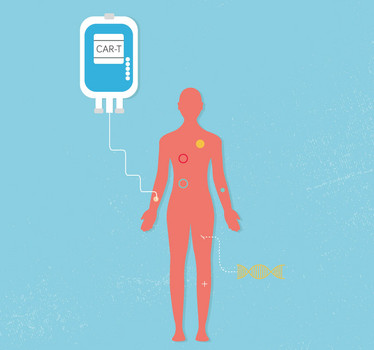
Training Courses
We also run the Cell Therapy Training Courses for early stage investigators with an MD or PhD (we just had one in Philadelphia) (1). We hope to expand the scope and number of these courses, as the demand exceeds supply! Currently, they run every two years in the US for a very select group of scholars that have been admitted from a larger cohort of applications. We have 16 scholars – six North American, six international, and four institutional – with an equal number of faculty, maybe more. It is a five-day intensive course, which begins with the proposal of a translational and clinical project. The course then covers a huge range of topics, including the design of clinical trials, statistics, quality assurance, regulatory affairs, manufacturing, testing, FDA speaker correlative studies, funding, and team science. Based on what they have learned during the course, they revise their initial project proposal to present on the last day for feedback. This year we will record these lectures for a webinar for ISCT members, and stream some sessions to the FDA.
We engage FDA staff so that we can increase our relationship and provide them with training. FDA reviewers need to be trained in the field and any way that we can assist in that training benefits both the FDA and the field as a whole. We see this as a global need – especially in regions of the world where staff are not trained to the levels that we see in the US, the UK, and elsewhere in Europe.
Educating the public...
Our public-facing education is incredibly important. We hold meetings and other activities, but it is primarily conducted through the ISCT Presidential Task Force (PTF). The PTF arose from the absolute need to differentiate scientifically- and clinically- validated therapies from unproven and unethical “therapies.” These so-called clinics sell a mess of things purported to be “stem cells”, and claim that they can treat everything from Alzheimer’s to autism. But these therapies have had harmful financial and medical effects on patients.
… and beyond
We also have scientific committees for various cell types and disease areas, as well as commercialization, lab practices, and legal and regulatory affairs committees. Each of those committees itself has activities – from white papers and publications to webinars and meeting sessions – for those interested in the various scientific, commercial, operations, regulatory and quality areas. These committees and the committees’ education initiatives are the original foundation of the ISCT.
If you think about cell therapy professionals, you’re thinking about laboratories and clinical programs. But now that some therapies have received approvals, they are being administered by nurses, pharmacists, and professionals in hospitals. We had a meeting earlier in the year where there was huge interest from nurses and pharmacists in transplantation and cell and gene therapy – and so we’ve also come up with an education initiative to meet that demand.
Participants get so much out of our training courses; it is often a turning point in their ability to translate, manage and lead clinical trials. We believe our courses are geared towards professionals that will make an impact – a little like those elite diplomatic or business courses... But as a society, we recognize that this is a small slice of our membership, and we want to offer education and training in different flavors to different audiences… You will see more coming in the near future.
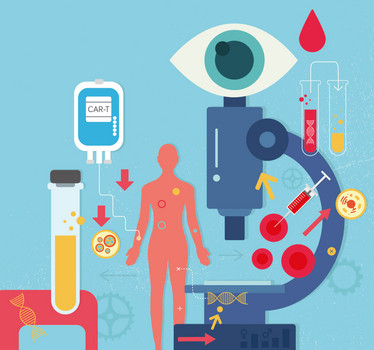
Patients as educators
The role that our patients have as educators is crucial. Many have joined the board of patient advocacy organizations, or have even started their own foundations. We often have patients speak at ISCT meetings, which serves to motivate our membership and investigators. The impact of patients is not mentioned enough; not only do they volunteer for our clinical trials, but they commit themselves to represent and educate others about how their therapy has enabled them to beat their disease.
You may have heard of Emily Whitehead and her parents, Kari and Tom. Emily is an icon. In 2012, at the age of seven, she was the first child to receive CAR T-cell therapy, which put her leukemia into remission. People know Emily around the world, and her picture is on the desk of the Director of the National Institutes of Health. She has met with celebrities; Steven Spielberg and Barack Obama have even wrote her get-out-of-school notes. It’s nice to meet famous people, but they are doing it for the purpose of advocacy. You don’t see such a connection with chemotherapy.
Hope is one of the most powerful words in the English language (and possibly other languages, for all I know). The incredible levels of patient involvement are not only because we are seeing success in “untreatable” cancers, but because these therapies are uniquely personal. The empowerment that patients feel from using their body’s own cells to fight their disease can only be sufficiently conveyed by hearing them speak about it themselves. And it is very different to poisoning yourself with chemotherapy.
ISCT marching forward
At some conferences, there are leaders and regulators who are not only saying they have a shortage of staff and are looking to establish a framework for appropriate regulations, but they are also asking, “Where do we start?” These countries are looking to the FDA and the EMA for guidance, but they are also looking for certain advice that the ISCT is best-placed to provide.
We are the only global cell and gene therapy society that is engaged in translational and clinical development. We have a very strong relationship with the FDA, and we are the lead society in the cell therapy liaison meetings. We have members with expertise all around the world. My vision for the society is to continue to engage professionals, to enhance our relationships with regulatory agencies around the world and, most importantly, to substantially enhance our education and training platforms.
- ISCT, “Cell Therapy Training Course 2019 – Philadelphia” (2019). Available at: https://bit.ly/35QZxqe.

